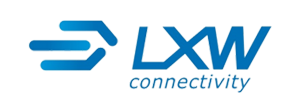What are the different types of board-to-board connectors available in the market?
Introduction
In the intricate world of electronics, the ability to establish secure and reliable connections between different printed circuit boards (PCBs) is paramount. Board-to-board connectors play a critical role in this domain, offering a durable and efficient means of achieving signal integrity and seamless communication between components. These connectors are indispensable in ensuring the optimal performance of electronic devices across various industries.
Defining Board-to-Board Connectors
Board-to-board connectors are specialized components used in electronics to create secure electrical connections between different printed circuit boards within a device. These connectors are pivotal in maintaining PCB interconnect integrity, ensuring that signals are transmitted clearly and without interference. They come in various types, each tailored to meet specific requirements and applications, making them a versatile solution in the electronics industry.
Different Types of Board-to-Board Connectors
Mezzanine or Stackable Connectors
Mezzanine connectors, also known as stackable connectors, are designed to facilitate the vertical integration of PCBs, providing a space-efficient solution for compact electronic devices. They are commonly used in industries such as telecommunications, aerospace, and medical devices, where space is at a premium, and high-density connections are required.
Flexible Board-to-Board Connectors
These connectors offer the flexibility to connect boards at various angles and distances, accommodating the dynamic needs of devices with moving parts. They are particularly prevalent in consumer electronics, such as smartphones and laptops, where the internal components require a flexible and reliable connection solution.
High-Density Connectors
High-density board-to-board connectors are designed to support a large number of connections within a limited space. They are crucial in high-performance applications like data centers and telecommunications equipment, where the demand for faster data transfer speeds and higher signal integrity is constantly increasing.
Rugged Board-to-Board Connectors
Engineered to withstand harsh environmental conditions, rugged connectors find their applications in industrial settings and outdoor equipment. They are built to resist factors such as vibration, moisture, and extreme temperatures, ensuring a stable connection even in the most challenging environments.
Right-Angle Connectors
Right-angle connectors allow for the connection of PCBs in a 90-degree configuration, making them ideal for use in space-constrained environments. They enable more flexible design options, allowing engineers to optimize the use of available space within the device.
Surface Mount vs. Through-Hole Connectors
Surface mount connectors are attached directly to the surface of the PCB, offering a compact and low-profile solution. Through-hole connectors, on the other hand, provide a more robust connection, with pins that extend through the PCB. Each type has its advantages and applications, depending on the specific requirements of the device.
Header and Socket Connectors
These connectors consist of two main parts: a header, which is a male component with exposed pins, and a socket, the female component that receives the pins. This configuration ensures a secure and reliable connection, making them a popular choice in a variety of electronic applications.
Section 3: How to Choose the Right Board-to-Board Connector
Choosing the right board-to-board connector requires careful consideration of several factors. The pitch size, or the distance between the connector pins, must be appropriate for the application, as it affects the size and density of the connection. The current rating of the connector is also crucial, as it determines how much electrical current the connector can safely carry. Material selection plays a role in the connector’s durability and performance, ensuring signal integrity and reliability.
Trends and Innovations in Board-to-Board Connectivity
The field of board-to-board connectivity is continually evolving, with ongoing advancements in technology driving the development of smaller, faster, and more reliable connectors. The trend towards miniaturization requires connectors to maintain high performance levels while reducing their footprint. Innovations in materials and design are also contributing to higher data transfer speeds and improved signal integrity.
Sourcing Quality Board-to-Board Connectors
Finding a reliable manufacturer is crucial when sourcing board-to-board connectors. Quality assurance and rigorous testing are paramount to ensure the connectors meet the required standards and perform as expected in the field. LXW Connector stands out in this regard, offering a wide range of high-quality board-to-board connector solutions, backed by extensive experience and expertise in the field.
Conclusion
Board-to-board connectors are a vital component in the world of electronics, providing secure and reliable connections between PCBs. With various types available, each suited to different applications and requirements, selecting the right connector is crucial. Innovations in technology continue to drive the development of smaller, faster, and more reliable connectors, ensuring they remain a key player in the electronics industry.
LXW Connector’s Solutions
LXW Connector is at the forefront of board-to-board connectivity solutions, offering a comprehensive range of products designed to meet the highest standards of quality and performance. We encourage you to explore our offerings and reach out to us for expert advice and top-notch connector solutions. Contact us at [email protected] to discuss your requirements and discover how we can assist you in achieving optimal connectivity in your electronic applications.

